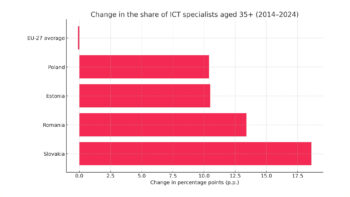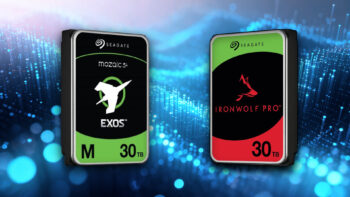The integration of IT and OT systems is becoming an indispensable part of digital transformation in industry. The merging of office and industrial environments opens up new opportunities for companies – from better use of operational data to process automation and cost optimisation. At the same time, however, it significantly expands the attack surface and changes the nature of the threats facing cyber security.
Increased efficiency at the expense of greater exposure
OT systems, traditionally isolated, are increasingly connected to IT networks and the cloud, making them vulnerable to attacks specific to the digital world. More and more companies are finding that modern industrial infrastructures – based on IoT, IIoT and remote management – can become easy targets without proper security.
Growing threats such as ransomware, remote session hijacking or advanced persistent threats (APTs) are no longer a concern only for IT departments. Today, the real risk of an attack means not only the loss of data, but also the suspension of production, damage to machines and, in extreme cases, the threat to the health or life of employees.
Remote sessions and APTs – the Achilles heel of OT networks
Two phenomena stand out among the most worrying attack vectors: session hijacking and APT attacks. The former involve taking over users’ remote connections or devices and using them to gain access to industrial networks. The second – more complex and longer-term – are based on the covert presence of cybercriminals on systems, often for many months before the actual attack takes place.
What do the two scenarios have in common? Lack of visibility and delayed response. Monitoring therefore becomes a key factor – not only of IT, but also of OT environments, which until now have often operated in isolation from procedures familiar to cyber security teams.
New standard: active and passive monitoring of OT networks
Integrated monitoring – combining data from the infrastructure, network and application layers – is now the foundation for building resilience in OT networks. The monitoring of industrial protocols such as OPC UA and the verification of the status of firewalls, updates and endpoint components play a special role here. A combination of passive (analysis of signals, logs, so-called traps) and active (connection testing, examination of device statuses) methods is key here.
This approach makes it possible not only to detect anomalies earlier, but also to understand their causes – whether there is a technical failure or perhaps a deliberate external action. Monitoring becomes not just an IT tool, but an integral part of the OT strategy.
Cyber resilience as an element of competitive advantage
The growing importance of cyber resilience in industrial environments shows that IT and OT security should no longer be treated separately. Integrating the two worlds requires a new approach – both technological and organisational. The key is to be proactive, automate monitoring and create a common language between production, IT and security teams.
Companies that invest in holistic risk management will not only gain greater security, but also a competitive advantage. At a time when any disruption in production can mean millions of dollars in losses, the ability to respond quickly to incidents is becoming one of the cornerstones of modern industry.












